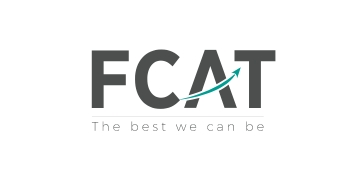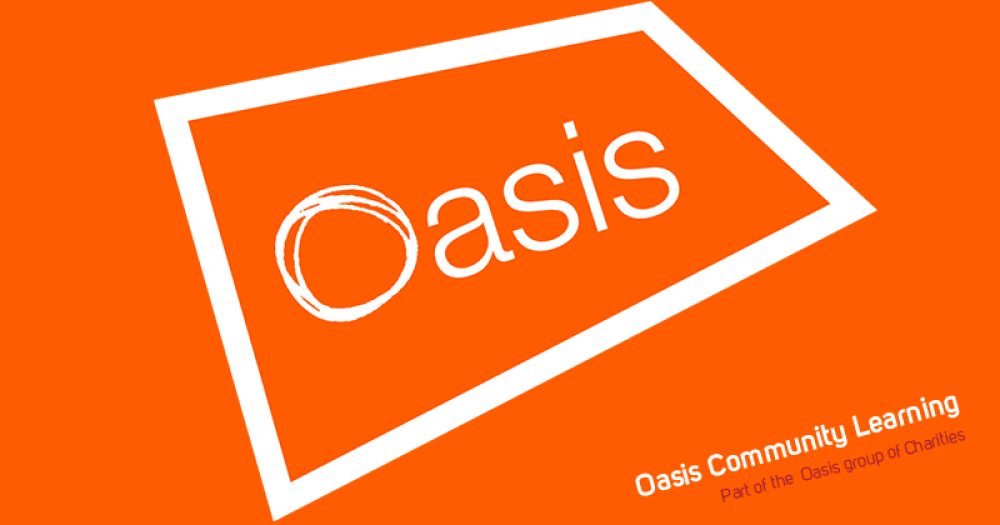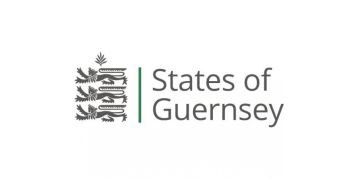Twice the number of pupils at an Oasis academy have been “home educated” since the start of the year compared to other schools in the area, with parents alleging they were encouraged to remove their children if they didn’t want them to be excluded.
Thirty-three pupils were taken out of the Oasis Academy Isle of Sheppey, off the north coast of Kent, to receive home education between September and April, according to a Freedom of Information (FOI) request published by the Kent Independent Education Advice blog.
The number of pupils leaving for home education from the academy, which belongs to one of the biggest multi-academy trusts in the country, Oasis Community Learning, is almost double that of the next two schools with the highest numbers of pupils leaving into home education in the area, which both had 17 pupils leave since the start of the year.
It is one of the highest rates in the area and the highest number for the whole of Kent, in part because it is a large school.
It comes as new data shows a 300 per cent rise in the number of pupils being home educated over the last decade across the country. Kent has the sixth largest rise in home educated pupils out of all councils, the figures show.
Oasis Community Learning did not dispute the number of pupils who had left. But Kirstie Fulthorpe, regional academy director for the trust, said “all decisions to take a pupil off-roll were solely as a result of parental choice”.
A “significant number” of the pupils who left to be home educated were “persisent school refusers”, she added.
The district of Swale, which the Isle of Sheppey falls into, is in the top 10 per cent most deprived areas in the country, and has seven of the 20 most deprived local council wards in Kent.
Peter Read, an education advisor and author of the Kent Advice blog, said he had heard from nine families who claimed to have been “encouraged” in meetings with the academy to home educate their children or risk their exclusion instead.
Three parents told him directly they were encouraged to home educate as an exclusion alternative, and another six shared details of the same experience in a private Facebook discussion, said Read. Schools Week has also subsequently spoken to two of these parents.
Oasis Academy Isle of Sheppey is a fully inclusive academy committed to providing the best education
Read added the academy also sent some year 11 pupils home for study leave without tuition, while others continued to be prepared for their GCSEs in school.
Fulthorpe confirmed that four per cent of pupils at Oasis Academy Isle of Sheppey had been told to conduct their exam revision from home, because this was “considered to be the most conducive arrangement all round”.
A spokesperson for Oasis confirmed the pupils were asked to do independent revision from home because they were disruptive pupils.
The figures in Kent come as a 361 per cent rise has been revealed across the country in the number of pupils home educated, from 8,361 children in 2006, to 38,573 last year, according to a Freedom of Information request by Oxford Home Schooling. In this time the total pupil numbers in secondary schools has dropped.
At the top of the list for home education was Southampton, followed by Hertfordshire, Liverpool, Northamptonshire, Walsall, and then Kent.
Kent had a 793 per cent increase over the past decade in pupils staying at home for their education.
Fulthorpe added: “Oasis Academy Isle of Sheppey is a fully inclusive academy committed to providing the best education for all our students.
“We always encourage every student to be as fully immersed in academy life as possible at all times.”
Clarification: We have amended the article to make clear the schools compared to Oasis Academy Isle of Sheppey are those with the next highest rates, not the nearest schools geographically








It cost the taxpayer £196k to transfer Isle of Sheppey from its first sponsors to Oasis. Shortly after the transfer, the Times published an article with the headline ‘Young head is charged with turning round the worst school in England’. The Times later published a clarification to say the ‘worst school’ was not based on Ofsted inspections. http://www.localschoolsnetwork.org.uk/2014/08/times-clarifies-headline-about-worst-school-in-england
The ‘young head’ has now left and the academy wasn’t turned round despite all the PR which accompanied it (it’s worth reading all the articles re Isle of Sheppey on the Kent Advice blog).
OK. my first thoughts on reading this were that it didn’t look good for Oasis, as if the allegations are true this would not be a responsible way to behave.
However a few minutes of looking online have made me question the basis of the story. The whole thrust of the piece seems to be saying that Oasis have had twice as many pupils taken out for home education “compared to nearby schools”.
In making this comparison you have looked at Ebbsfleet Academy and Cornwallis Academy.
Ebbsfleet Academy (not “ebsfleet”) is 30 miles by road away from Oasis Isle of Sheppy and is located in Swanscombe, a small town located between Dartford and Gravesend.
Cornwallis Academy is 22 miles by road away from Oasis Isle of Sheppy and is located just south of Maidstone.
Curious then why you would seek to use these two schools as the benchmark to compare Oasis Isle of Sheppy with. Your article refers to how “the district of Swale, which the Isle of Sheppey falls into, is in the top 10 per cent most deprived areas in the country” however you’ve compared it with schools in much more affluent areas. This is underlined by the difference in the numbers of pupils eligible for free school meals. At Oasis Isle of Sheppy the number is an extremely high 53.3%. Ebbsfleet Academy is higher than the national average at 38.2% (still a lot lower though) and Cornwallis Academy is less than half at 25.6% (below national average).
And then there’s the question of those distances. You say Ebbsfleet Academy and Cornwallis Academy are “the next two schools in the area” but looking at the .gov.uk website, there are 88 secondary schools closer to Oasis Isle of Sheppy than either of those two.
So why on earth are you using Ebbsfleet Academy and Cornwallis Academy as the comparators?
We then come to the numbers themselves. If we compare Oasis Isle of Sheppy to Cornwallis Academy (and we forget that it looks as though they have a completely different make-up of pupil populations) then the numbers do support the article. Oasis Isle of Sheppy has 1512 pupils with 33 taken out, and Cornwallis Academy has 1469 pupils with 17 taken out. The ratio is indeed about double for Oasis Isle of Sheppy.
But what about Ebbsfleet Academy? According to the article, Ebbsfleet also had 17 pupils taken out but “has about half the pupil population”. If that were the case, then Ebbsfleet Academy would have the same percentage of pupils being taken out as Oasis Isle of Sheppy. However those aren’t really the right figures. According to EduBase, Oasis Isle of Sheppy has 1512 pupils whereas Ebbsfleet Academy has 548 pupils. My maths may be a bit rusty, but 548 is not “about half” of 1512, it’s more like a third. A quick run through the calculator shows that the percentage of pupils leaving Ebbsfleet Academy to be home schooled is almost 50% higher than at Oasis Isle of Sheppy.
I agree the whole issue of pupils being encouraged to leave schools to be home educated is an important issue and should be investigated, I’m just at a loss to understand the basis for why you think Oasis are the big bad ogre. Even on the basis of the figures you’ve used surely you should be looking at Ebbsfleet Academy rather more closely …
Okay, responsible and transparent publications don’t change the articles they’ve published online without noting the changes. As an example I may take a different line to Janet Downs on a few things, but whenever she amends one of her online articles she always puts an “Update Note” at the end of the article to show what has changed.
I see you’ve changed your article to correct the spelling of Ebbsfleet Academy and to set out that you’ve compared Oasis Isle of Sheppy to Ebbsfleet and Cornwallis as they are “the next two schools with the highest numbers of pupils leaving into home education in the area”.
I see you haven’t corrected your comments claiming that Ebbsfleet “has about half the pupil population” of Oasis Isle of Sheppy, but you have added a sentence saying that “the home education rate at the Oasis academy is the highest for the whole of Kent”. Given the figures for leavers you have provided, and the school numbers from EduBase this doesn’t look right at all. Time for another correction?
And now I’ve seen you clarification notice so I feel like a proper plum!
We can argue about whether a school had a higher number of students sent for “home education” than another school. I worked in Comprehensive Schools for 36 years and I am not aware of ANY students from the schools I worked in removing students off roll for “home education”.
If students are persistent non-attenders, the last thing they need is “home education”. I understand why school leaders would feel forced to do this. It tells us we have a broken system.
Should Mayhem win the Election our education system for those unable to find £40000 for a private school place will be finally shredded One head in Bromley has said should Tories win the following four things will happen in her school 1/ 15 teachers will be sacked 2/ The curriculum will be curtailed 3/ The school will go on a four day week 4/ Parents will be asked to contribute to the equipment the school will need. The coalition of chaos will be the Tory one not the one the Tories keep waff;ing about.
I agree that this is an important issue that needs to be understood, but if it’s going to be reported on it should be done properly. As an anecdotal story, I know a couple of people who have become tutors for home-educated children. They’re experience is that there has been an explosion in the number of children from relatively well-off families who have made the move to home education. So clearly the massive growth in the total number of children who are being home educated is not entirely down to the ‘difficult’ children being ‘persuaded’ to move on, but how much is?
Sensationalist reporting like this, which seems to get fundamental points wrong and glosses over all sorts of important and relevant information does the issue a disservice. I’m afraid I believe the author saw it as an opportunity to bash Oasis (which personally I have no great love for) rather than actually trying to work out what’s going on with home education. A shame.
If you think the children moved to “home education” from the schools quoted, are from well-off families, and are being moved for positive educational reasons, I suggest you speak to more teachers who work in state secondary schools. I do not criticise the headteachers who are between a rock and a hard place. I would be very surprised if this is only happening in Oasis Academies. If it is legal, it is probably the cheapest and fastest way to climb the league tables, and therefore likely to be common practice. However, it is not something that headteachers will be proud of and wanting to be open about.
Of course I don’t think that. As I have commented on, given that Oasis Isle of Sheppy is in the top 10 per cent most deprived areas in the country I can’t imagine any of the 33 children come from well-off families.
I referred to the “total number of children who are being home educated”, i.e. what the article refers to as the increase from 8,361 children in 2006 to 38,53 last year. (I presume the author meant to refer to 38,530). My point was I have seen nothing which explains how much of this increase of 30,000 pupils is down to circumstances like in Oasis Isle of Sheppy and how much is down to a decision taken by families who have a number of options.
This is something that has been looked at by others. The BBC did a piece 18 months ago saying that the number one reason for withdrawing children from school in the 41 council areas where there were records was “a difference of philosophy or lifestyle” (13.4%), although in my county of Gloucestershire it was 37% (I don’t know what that says about us!)
Personally I am concerned at the lack of knowledge about what is going on within the arena of ‘home education’, and my number one issue is that there don’t seem to be many obligations on parents to inform and notify. With such large numbers involved this is something that should be looked at properly rather than someone looking to score cheap politically-motivated points against Oasis.
I posted the above comments on June 6, 2017 at 10:07 am.
For some reason it wasn’t published and the message still comes up that “Your comment is awaiting moderation.”
Maybe it was because I included three links to stories about this issue – one from the BBC and two from the Guardian.
In case that was the reason I reposted the comments without the links and it seems to have gone through. I think the articles I linked to are relevant to this issue, and so I’ll repost them below this comment. If you can’t see them, it’s because they’ve been ‘held for moderation’ …
Who picks up the tab for home-educated children? It’s been a long time since I was teaching but if pupils weren’t in school for some reason (eg exclusion, school refusing) then the LA paid for home tuition. But there would have to be a genuine reason. I’m not sure persuading parents to home-educate as an alternative to exclusion (if that’s what is happening) would be sufficient reason for LAs to pay the bill. Is it parents who pay? If the pupils are off-roll then paying for home tuition would likely fall on the LA.
The DfE doesn’t provide any financial support for home education, and my LA (Gloucestershire) doesn’t either. As I understand it no LA offers financial support for elective home education (which is what this article seems to be about).
The parents pick up the tab for home educating. This means that children being home educated save the government about £5000 per head per year. I wonder were that money goes?
Just to add that elective home educated students can be funded by EFA through colleges.